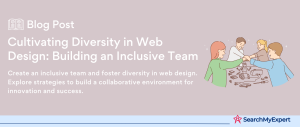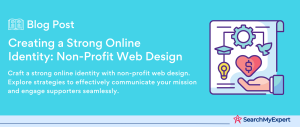Conversion Rate Optimization (CRO) in Web Design
What is Conversion Rate Optimization (CRO)?
Conversion Rate Optimization (CRO) is a pivotal strategy in web design and digital marketing, focusing on enhancing the effectiveness of a website to increase the percentage of visitors who complete a desired action. This action could be anything from signing up for a newsletter to making a purchase. CRO involves a thorough understanding of how users interact with a site, what actions they take, and what might be preventing them from completing conversions.
Why is CRO Important for Web Design?
CRO is crucial for web design because it directly impacts a website’s ability to achieve its business goals. It’s not just about attracting visitors; it’s about converting those visitors into active customers or engaged users. Effective CRO leads to better user experiences, making a website more intuitive and user-friendly. This optimization is essential in a digital landscape where user expectations are high, and the competition is just a click away.
Key Benefits of Applying CRO Principles
- Increased Conversion Rates: The most direct benefit is an increase in conversion rates, meaning more of your visitors are taking the actions you want them to.
- Improved User Experience:
CRO often involves simplifying navigation, speeding up load times, and making the site more visually appealing, all of which enhance user experience. - Higher ROI:
By optimizing your website for conversions, you get more value from existing traffic, improving your return on investment. - Data-Driven Decisions: CRO is based on analyzing user behavior data, leading to more informed and effective decisions.
- Competitive Advantage: A well-optimized website can set you apart from competitors, attracting and retaining more customers.
- Reduced Customer Acquisition Costs: By increasing conversions from existing traffic, you lower the cost of acquiring new customers.
Defining Your Goals and KPIs in CRO
Identifying Desired User Actions (Conversions)
The first step in CRO is to clearly define what a ‘conversion’ means for your website. This varies greatly depending on your business model and objectives. For an e-commerce site, a conversion might be a sale, while for a B2B service provider, it might be a form submission or a download.
Setting Measurable Key Performance Indicators (KPIs)
Once conversions are defined, setting KPIs is crucial. KPIs are quantifiable metrics that help you gauge the performance of your website in achieving its objectives. These could include conversion rates, average order value, or the number of sign-ups.
Mapping the User Journey and Conversion Funnel
Understanding the user journey is vital for CRO. It involves mapping out the steps a user takes from the moment they land on your site to the point of conversion. This understanding helps in identifying barriers to conversion and areas for optimization.
Analyzing User Behavior and Data in CRO
Web Analytics Tools and Platforms
To effectively optimize conversion rates, it’s crucial to leverage web analytics tools. These tools provide valuable insights into how users interact with your website. Popular platforms like Google Analytics, Adobe Analytics, and Heatmap tools like Hotjar or Crazy Egg offer a plethora of data, including page views, bounce rates, and user pathways.
Identifying User Pain Points and Drop-off Points
One of the key uses of analytics is identifying where and why users are leaving your website or failing to convert. This involves analyzing pages with high exit rates or where users spend less time than expected. By identifying these pain points, you can make targeted improvements to keep users engaged and moving through the conversion funnel.
Understanding User Demographics, Behavior Patterns, and Preferences
Analytics also provide detailed information on user demographics, behavior patterns, and preferences. This data helps create user personas, a semi-fictional representation of your ideal customers, which in turn aids in tailoring your website’s design and content to better meet the needs and expectations of your target audience.
Optimizing Website Design Elements for CRO
User Interface (UI) and User Experience (UX) Considerations
The UI and UX of a website are crucial components of CRO. A well-designed interface that’s easy to navigate and aesthetically pleasing can significantly enhance user experience, thereby increasing the likelihood of conversion.
Content Structure and Hierarchy
Organizing content in a clear and logical structure is essential. This includes having a well-defined hierarchy that guides users naturally through the information and towards conversion points. Good content structure also improves SEO, making it easier for search engines to index and rank your site.
Visual Design Elements, Including Calls to Action (CTAs)
Visual elements like color schemes, font choices, and imagery should align with your brand and appeal to your target audience. Calls to Action (CTAs) are particularly important; they should stand out and clearly communicate what action you want the user to take. Optimizing these visual elements can lead to a more engaging and conversion-friendly website.
A/B Testing and Iteration in Conversion Rate Optimization
Testing Different Design Variations and Hypotheses
A/B testing, also known as split testing, is a methodical process in CRO where two versions of a webpage (A and B) are compared to determine which performs better. This method involves changing one variable at a time (like a headline, CTA button, or image) and then analyzing how these changes impact user behavior.
Analyzing Results and Data-Driven Decision Making
The key to successful A/B testing is rigorous analysis. By examining metrics such as conversion rates, time on page, and click-through rates, you can understand which version resonates better with your audience. This approach ensures that every decision made about your website is backed by actual user data, reducing guesswork and personal bias.
Iteratively Improving Website Design Based on Insights
Iterative improvement is the cornerstone of CRO. Insights gained from A/B testing should be used to make continuous, incremental changes to your website. This process of testing, analyzing, and refining helps in constantly evolving the website to better meet the needs of your users.
Conversion Optimization Tools and Resources
Available Tools for CRO Analysis and Implementation
There is a plethora of tools available for conducting CRO. These range from analytics platforms like Google Analytics to testing tools like Optimizely or VWO. User feedback tools like Qualaroo or survey platforms can also provide valuable insights.
Educational Resources and Best Practices
Staying informed about the latest trends and best practices in CRO is crucial. There are numerous resources available, including online courses, webinars, blogs, and forums. Websites like Moz, HubSpot, and Neil Patel’s blog offer a wealth of information on CRO strategies and tactics.
Continuous Monitoring and Optimization in Conversion Rate Optimization
Conversion Rate Optimization (CRO) is not a one-time task but a continuous process of improvement and adaptation. To maintain and enhance the effectiveness of your website, continuous monitoring and optimization are essential.
Ongoing Conversion Tracking and Performance Analysis
Regularly tracking and analyzing key performance indicators (KPIs) is crucial in understanding how well your website is performing. This involves consistently monitoring conversion rates, bounce rates, user engagement metrics, and more. Using tools like Google Analytics, you can gather data on user behavior and website performance.
Adapting to User Behavior Changes and Trends
The digital landscape is dynamic, with user behaviors and preferences constantly evolving. It’s essential to stay updated with these changes and trends. This means regularly reviewing your analytics, staying informed about industry changes, and being ready to adapt your website accordingly.
Keeping Up with Technological Advances
As technology advances, new tools and features become available that can enhance your website’s performance. Staying abreast of these developments ensures that your site remains current and competitive.
Responding to Market Changes
Market changes can significantly impact user behavior. Economic shifts, emerging trends, and competitor activities are just a few factors that can alter user engagement with your website.
Maintaining a Data-Driven and User-Centric Approach
A successful CRO strategy always puts the user at the center. Every decision should be made with the user’s experience in mind, and data should be the driving force behind these decisions.
Leveraging User Feedback
Direct feedback from users can be invaluable. Encourage feedback through surveys, user testing, and other methods to gain insights directly from your audience.
Iterative Design and Testing
Continuous optimization means regularly testing and refining your website. This could involve tweaking the design, adjusting content, or experimenting with different functionalities. Each iteration should be guided by user data and feedback.
Balancing Business Goals with User Needs
While the ultimate goal is to improve conversions, it’s important to balance this with providing value to the user. A website that focuses solely on conversions without considering user experience can drive potential customers away.
The Role of AI and Machine Learning
Advancements in AI and machine learning are revolutionizing the way we analyze data and understand user behavior. These technologies can identify patterns and insights that might not be obvious through traditional analysis, leading to more effective optimization strategies.
Conclusion
Continuous monitoring and optimization are the lifeblood of a successful CRO strategy. By staying data-driven, user-focused, and adaptable, you can ensure that your website not only meets but exceeds user expectations, leading to higher conversion rates and business success.
Revolutionize your online identity with our Web Design Company.
Table of Contents
Toggle






